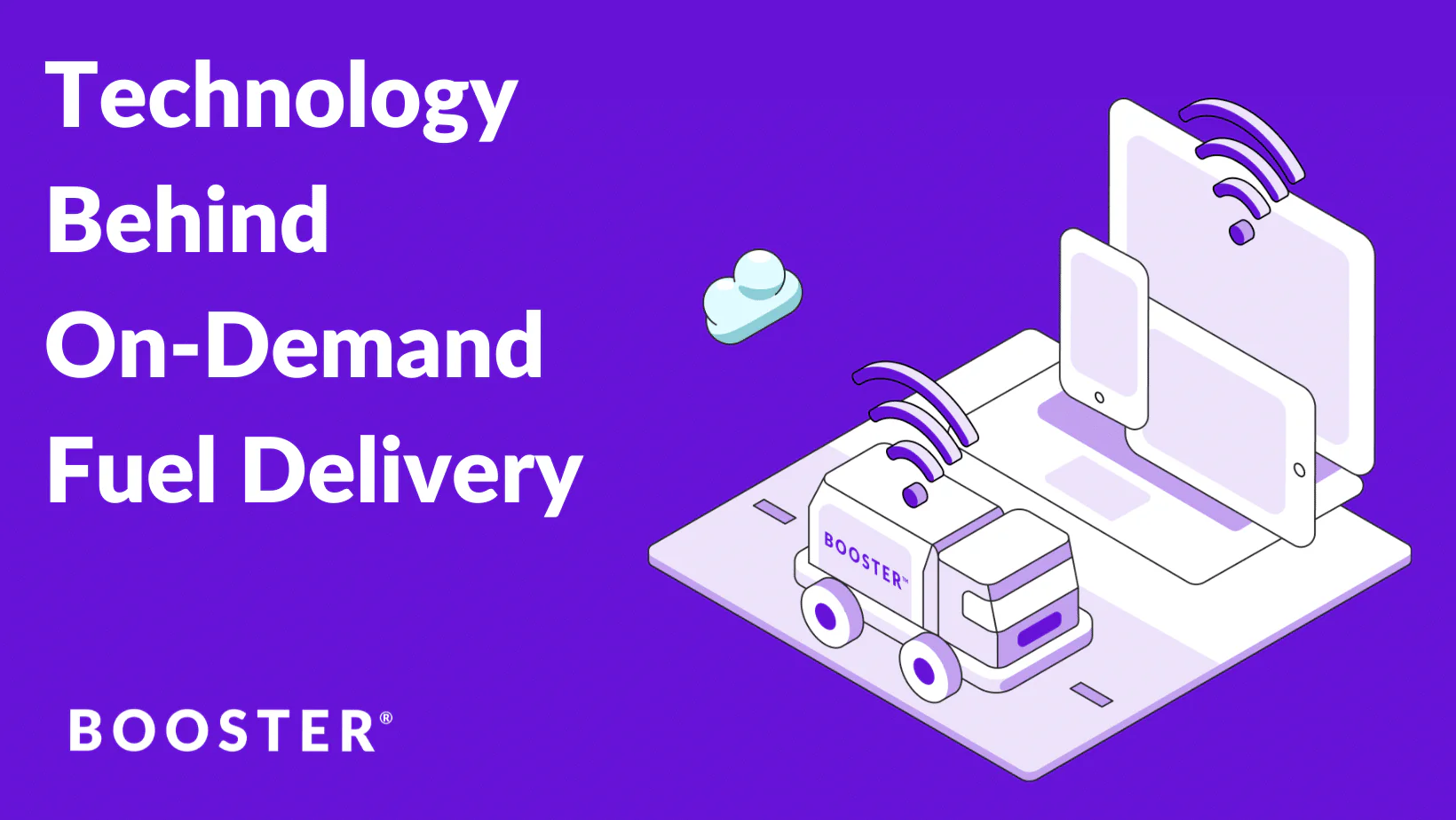Introduction
The concept of on-demand fuel delivery is becoming increasingly popular in the current era of efficiency and technological advancement.
Picture this scenario: It’s a chilly evening and you only have a few customer stops below, but you look down and see that you’re running low on fuel. You know that you will need to leave your route to drive to the gas station, likely waiting in line to fill up your tank. This inconvenience wastes time and money. But what if there was a way to avoid this hassle altogether?
That’s where on-demand fuel delivery comes in. In today’s fast-paced world, this innovative concept is gaining traction for its convenience and efficiency. With just a few taps on a smartphone, you can have fuel delivered to you and your fleet, wherever you are. This technology is a game-changer
Booster has emerged as the leading provider of on-demand fuel delivery services. In this blog post, we will take a closer look at the technology behind Booster and how it is revolutionizing the fuel delivery industry.
We will explore the various features of on-demand fuel delivery and why it continues to gain popularity.
The Emergence of On-Demand Fuel Delivery
The concept of on-demand fuel delivery is relatively new, but it has already made a significant impact on the fuel industry.
On-demand fuel delivery services provide an easy and convenient way for consumers and businesses to get fuel delivered directly to their vehicles without having to go to a gas station.
This has a number of benefits, including time-saving, convenience, and the ability to avoid gas station queues. For fleet customers, there is also an added benefit of safety.
One of the pioneers of on-demand fuel delivery is Booster, a company founded in 2015. Booster is a technology-based company that provides fuel delivery services primarily to fleet customers
The company uses a proprietary app and software to provide on-demand fuel delivery services to its fleet customers.
Features of On-Demand Fuel Delivery
There are a few features of on-demand fuel delivery that set companies like Booster apart.
Direct Vehicle Fuel Delivery
The primary feature of on-demand fuel delivery is the ability to get fuel delivered directly to your vehicle. This eliminates the need to go to a gas station
24/7 Availability
On-demand fuel delivery services are available 24/7, allowing customers to get fuel delivered to their vehicles at any time, day or night. This is particularly useful for businesses with busy schedules.Tanks can be filled overnight ensuring that fleet vehicles are ready for drivers in the morning.
Contactless Delivery
On-demand fuel delivery services offer contactless delivery. Customers can order fuel using an app or website and have it delivered directly to their vehicles without any physical contact with the delivery driver. This proved to be a differentiator and especially important during the COVID-19 pandemic.
Environmentally Friendly
On-demand fuel delivery services are environmentally friendly. Booster uses renewable diesel, a low-carbon fuel made from 100% renewable sources, to help reduce greenhouse gas emissions and minimize the impact of fossil fuels on the environment.
So the next time you need to refuel, consider giving on-demand fuel delivery a try. It’s not only convenient but also eco-friendly.
Cost Savings
On-demand fuel delivery is cost-effective for customers who frequently travel long distances or have large vehicles that consume a lot of fuel.
Customizable Delivery Options
Booster offers customizable delivery options, such as choosing the fuel type or selecting a specific time for delivery. This level of flexibility allows for an easyfuel delivery experience.
The Technology Behind Booster
Booster’s on-demand fuel delivery service is powered by technology and offers customers the flexibility to manage their fuel requests digitally and gives visibility into the entire delivery process.
Booster’s trucks are dispatched to customer locations and each truck is equipped with a fuel pump, hoses, and other equipment needed to deliver fuel directly to the customer’s fleet.
The Booster software manages the entire delivery process, from the moment the order is received to the moment the fuel is delivered. The software tracks the location of the fuel truck and provides real-time updates to the customer, so they know exactly when their fuel will arrive. It also gives customers access so they can track how much fuel is being delivered and which trucks received a full tank.
Booster’s technology also includes a sophisticated algorithm that helps to optimize the routing and delivery process. The algorithm considers factors such as traffic, weather conditions, and fuel demand to ensure that deliveries are made as efficiently as possible.
Conclusion
In conclusion, the technology behind on-demand fuel delivery is revolutionizing the fuel industry. Companies like Booster are leading the way by providing efficient, convenient, and environmentally friendly fuel delivery services.
The on-demand fuel delivery model not only saves time and increases efficiency, but it also reduces carbon emissions and contributes to a cleaner environment.
As more people adopt the on-demand fuel delivery model, we can expect to see a significant shift in the fuel industry. With its focus on convenience, efficiency, and sustainability, on-demand fuel delivery is a viable and promising solution to meet the growing demand for fuel in the 21st century
The technology behind on-demand fuel delivery is rapidly evolving, and we can expect to see even more innovative solutions and advancements in the near future.
In the end, the on-demand fuel delivery model offers a win-win situation for both consumers and the environment.
By leveraging cutting-edge technology and a commitment to sustainability, companies like Booster are shaping the future of fuel delivery and transforming an industry that has remained relatively unchanged for decades.
As we move towards a more sustainable future, on-demand fuel delivery is sure to play a critical role in meeting our energy needs while reducing our carbon footprint.
